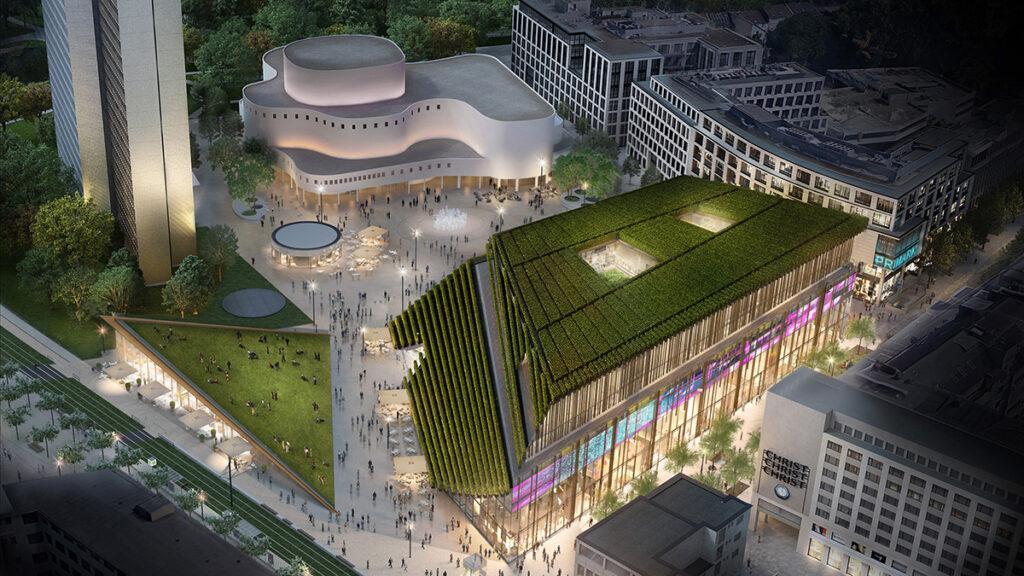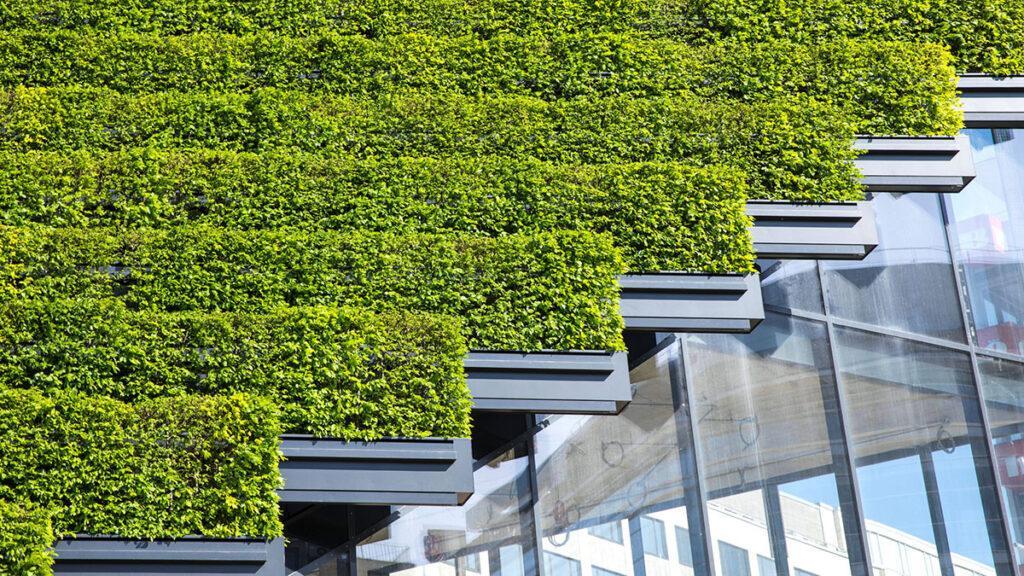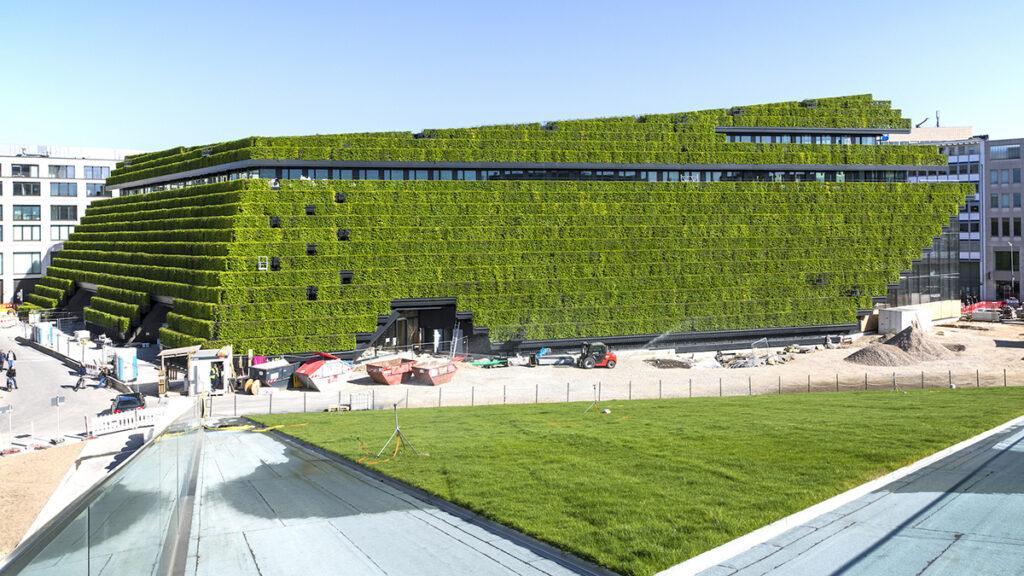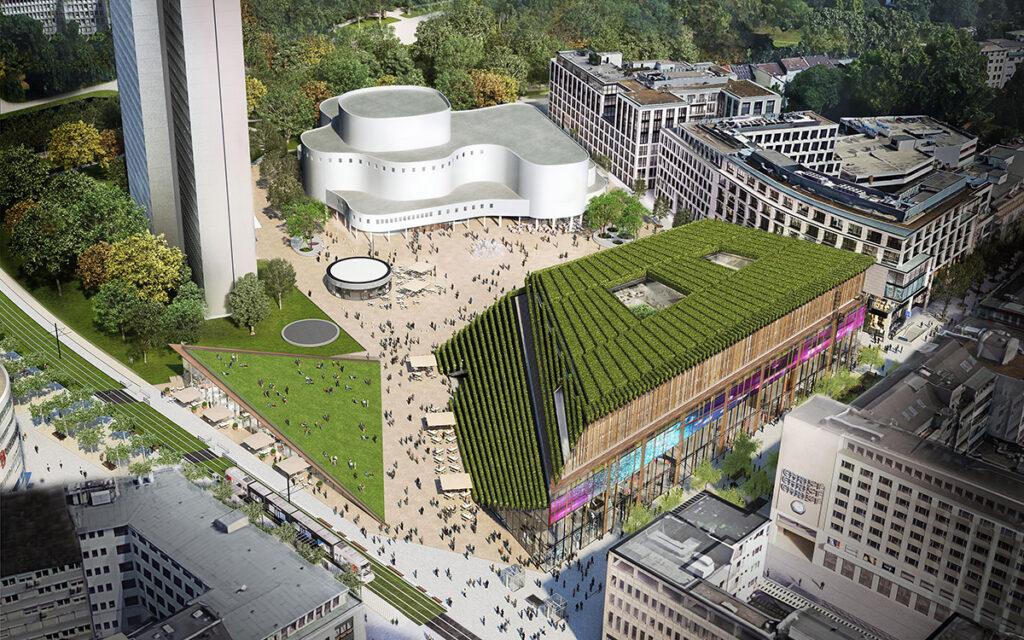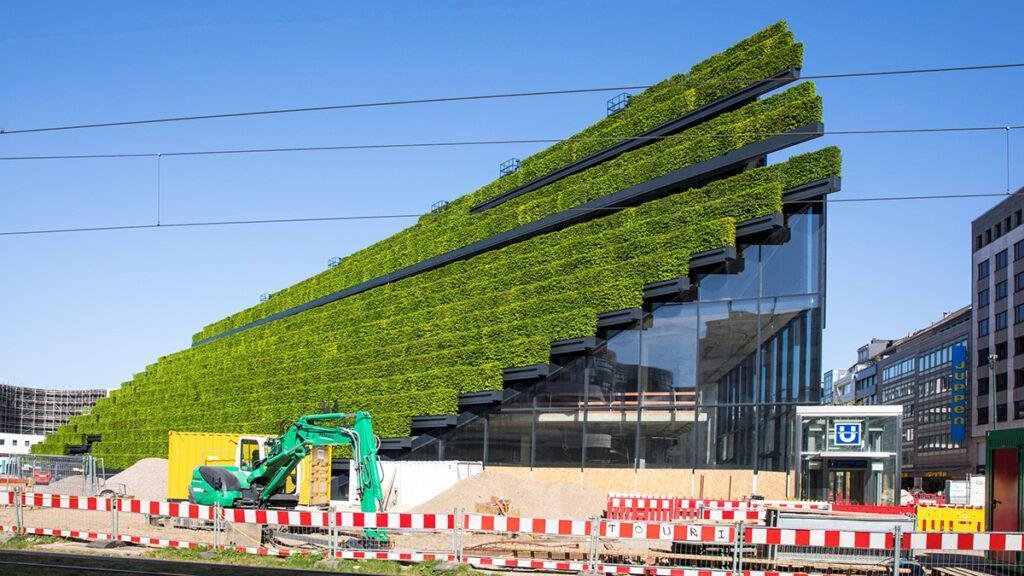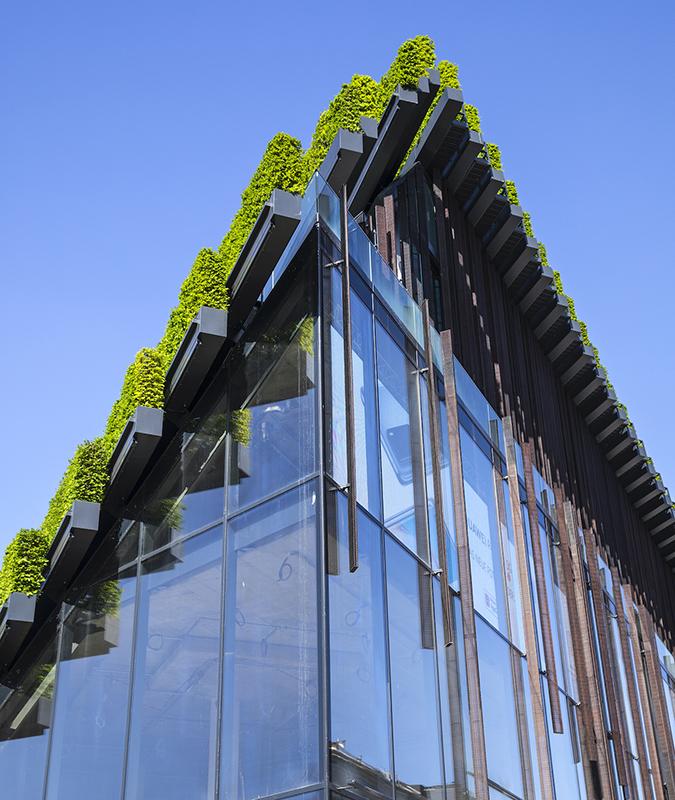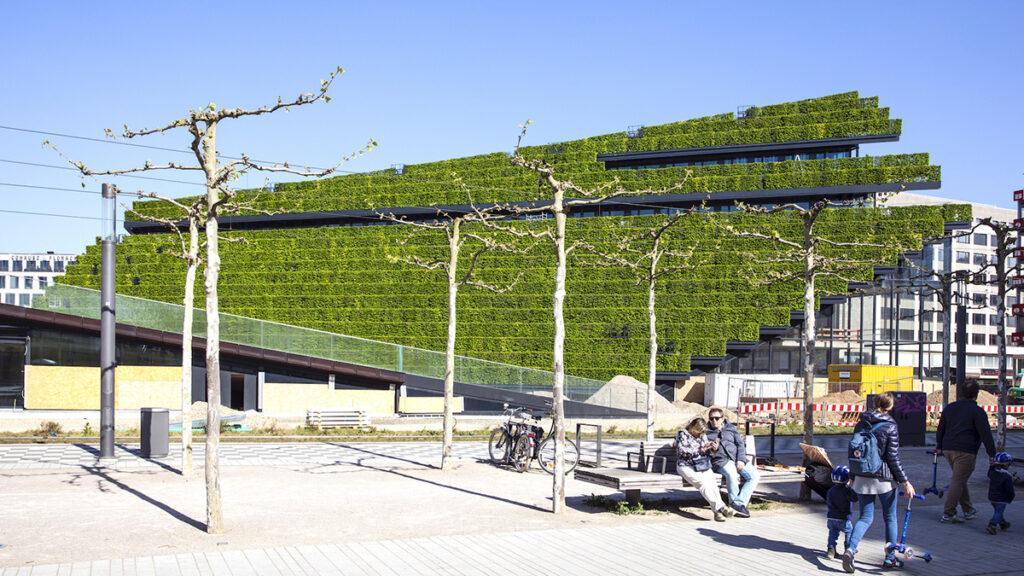The new green heart of Düsseldorf
Europe’s largest green facade is shooting skyward in downtown Düsseldorf. No fewer than 30,000 young hornbeams are currently flourishing on the roof and sloping walls of the “Kö-Bogen 2” complex. The major project is setting new standards in climate protection and urban planning.
The hornbeam is a wonderfully rewarding plant. Robust and non-poisonous, it grows quickly into thick hedges. And now the good people of Düsseldorf can enjoy the sight of its leaves changing colour with the seasons – without having to head out to the countryside. This is because the final stage of the extensive redesign in the centre of Düsseldorf, the capital of the German state of North Rhine-Westphalia, is treating them to the largest green facade in Europe: 30,000 trees rooted on the walls and roof of the new “Kö-Bogen 2” complex. In other words: eight kilometres of hornbeam hedges that will keep the air clean and temperatures down.
Climate-friendly architecture
The urban green miracle was designed by ingenhoven architects. Developed by investor community CENTRUM and the B&L Group, it is actually raising the bar for inner-city buildings. After all, the hornbeam hedges have the same climate effect as 80 full-grown deciduous trees. And there is no doubt that they set apart the new retail and office ensemble “Kö-Bogen 2” as an architectural highlight. As well as this, they are a veritable eye-catcher: already showing fresh growth, the plants make the facade on Gustaf-Gründgens-Platz look like a green wall.
The green facade was a central element in architect Christoph Ingenhoven’s concept from the outset. After all, “Kö-Bogen 2” is designed to contribute to climate protection while lending downtown Düsseldorf a more sustainable design.
This idea has spawned spectacular results in other parts of the world too. For instance in Thomas Heatherwick’s “1000 Trees” project in Shanghai. Or in London, where Sheppard Robson is planning a new luxury hotel covered in plants. However, unlike these two flagship buildings, “Kö-Bogen 2” has already achieved its goal: its trees are growing perfectly right now. Not to mention that 75% of the retail space in the new building has long been snapped up and that most businesses under the green roof will be opening their doors in the second half of 2020.
Keeping cool with plants
The positive effects of the giant hornbeam hedges on the inner-city climate are plain to see. The greening prevents the facade of “Kö-Bogen 2” from heating up disproportionately to as much as 70 degrees when exposed to strong sunlight and returning this heat to the ambient air. Here, the plants act as a buffer against heat, stopping temperatures around the new complex from rising.
We need courage and commitment to redesign our cities for a more climate-friendly future.
Christoph Ingenhoven, architect and founder of ingenhoven architects
In addition, the greening acts as an ongoing energy converter. An irrigation system provides the hornbeam hedges with the water and nutrients it requires at any given time of the year. The plants themselves release moisture into the air through their leaves, resulting in a cooling effect. And, to cap it all, their leaves bind fine dust, absorb CO2 and produce oxygen. The kind of ecological benefits that are otherwise only provided by clusters of mature deciduous trees.
Jürgen Mentzel, who is at the helm of the CENTRUM Group’s project development, is delighted that the building not only helps to define the cityscape but also brings an attractive green concept to fruition at the same time. As he explains: “We help to ensure that people continue to enjoy being downtown even in the face of the changing climate. We have spent a long time examining in great detail which facade greening is the best.” For planting the greenery, the developers enlisted working group ArGe-Carpinus Kö-Bogen II with specialists Leonhards (Wuppertal) and Benning (Havixbeck) as part of the team.
University experts for greening of “Kö-Bogen 2”
Scientific expertise for the green project was provided by Beuth University of Applied Sciences. As resident phytotechnologist Prof. Karl-Heinz Strauch explains: “The positive effect of having a protective shell of hornbeams for the inner-city climate should not be underestimated”. Several years of studies yielded extensive findings about how plants grow in this special system – and about their exact needs and ecophysiological performance.
Prof. Strauch: “We now know that the facade’s protective plant shell alone will cover a surface of 30,000 square metres – which is larger than four soccer pitches combined. So the building is a significant energy converter.”
According to Prof. Strauch, almost half of the solar energy is converted to water vapour by the plants. Which means that buildings like “Kö-Bogen 2” close the gap in the natural water cycle in cities. Prof. Strauch: “For city climates, this – together with other effects – is especially important and effective”.
Düsseldorf’s new, green centre
“Kö-Bogen 2” marks the conclusion of an extensive urban renewal project in the heart of Düsseldorf. The building in the first construction stage “Kö-Bogen Königsallee” was based on designs by star architect Daniel Libeskind. Now that the densely planted second part has been completed, Düsseldorf not only boasts spectacular works of architecture but also a new green heart. In an area dominated by an elevated motorway until 2013.
A rethink in urban planning
Christoph Ingenhoven sees this as a paradigm shift – a departure from the automotive era in favour of more people-oriented planning: “Giving back as much green as possible to the city is a task that ingenhoven architects have been working on for decades”.
The building’s lush coat is a major visual benefit. As Martin Belz from landscape design office Leonhards explains: “The leaves change colour several times”. This means that the new building will be light green in the spring and darker in the summer. Which will give way to yellow, orange and red in the autumn, culminating in a warm brown.
Growing trees for “Kö-Bogen 2”
The plants for “Kö-Bogen 2” were cultivated over the last three years in the Ammerland district of Lower Saxony, where they were grown in large troughs with mineral substrate. The exact position on the facade and on the roof of the new building was specified beforehand. This means that the young trees enjoy the same conditions there as they did in their place of cultivation.
Wuppertal-based company Leonhards will be responsible for caring for the plants. A care concept has been agreed with the City of Düsseldorf for the next 99 years to enable the greening to retain its splendour for many years to come. The hornbeams are also to be pruned to a height of around 1.30 metres twice or three times a year to prevent them from proliferating wildly.
This project rounds off the new heart of downtown Düsseldorf. When all of its floors are taken into account, it covers some 66,000 square metres, complete with underground parking with a connection to the car tunnel and access to the Düsseldorf Schauspielhaus theatre.
Text: Elisabeth Schneyder
Translation: Rosemary Bridger-Lippe
Images: CENTRUM Group
